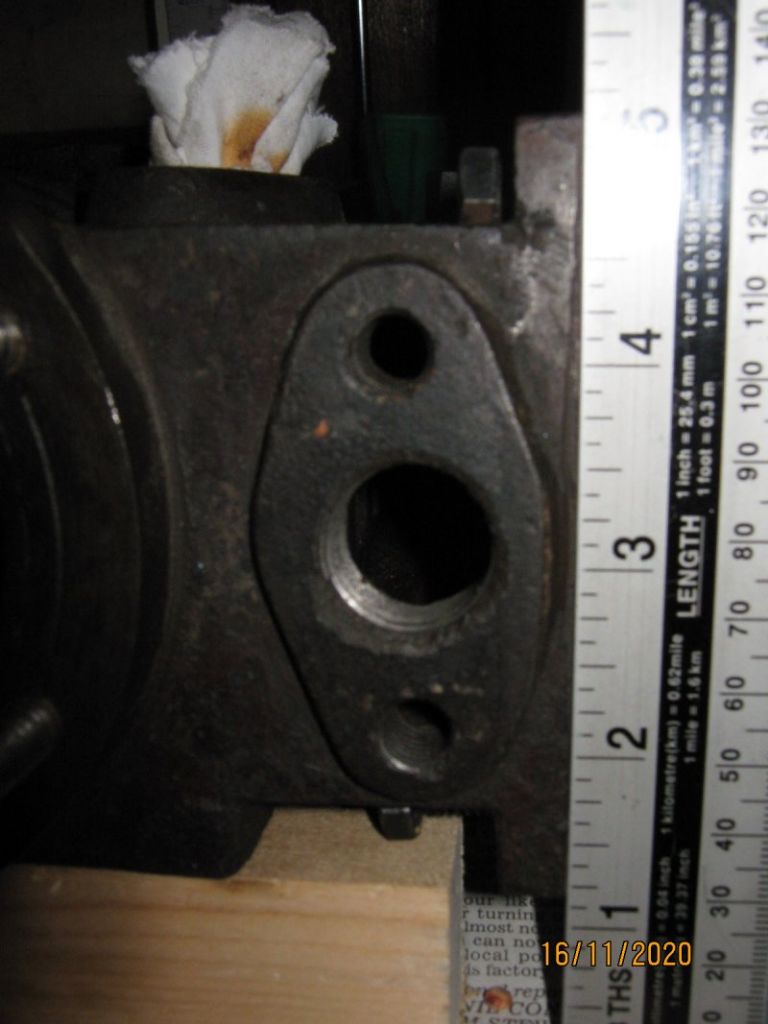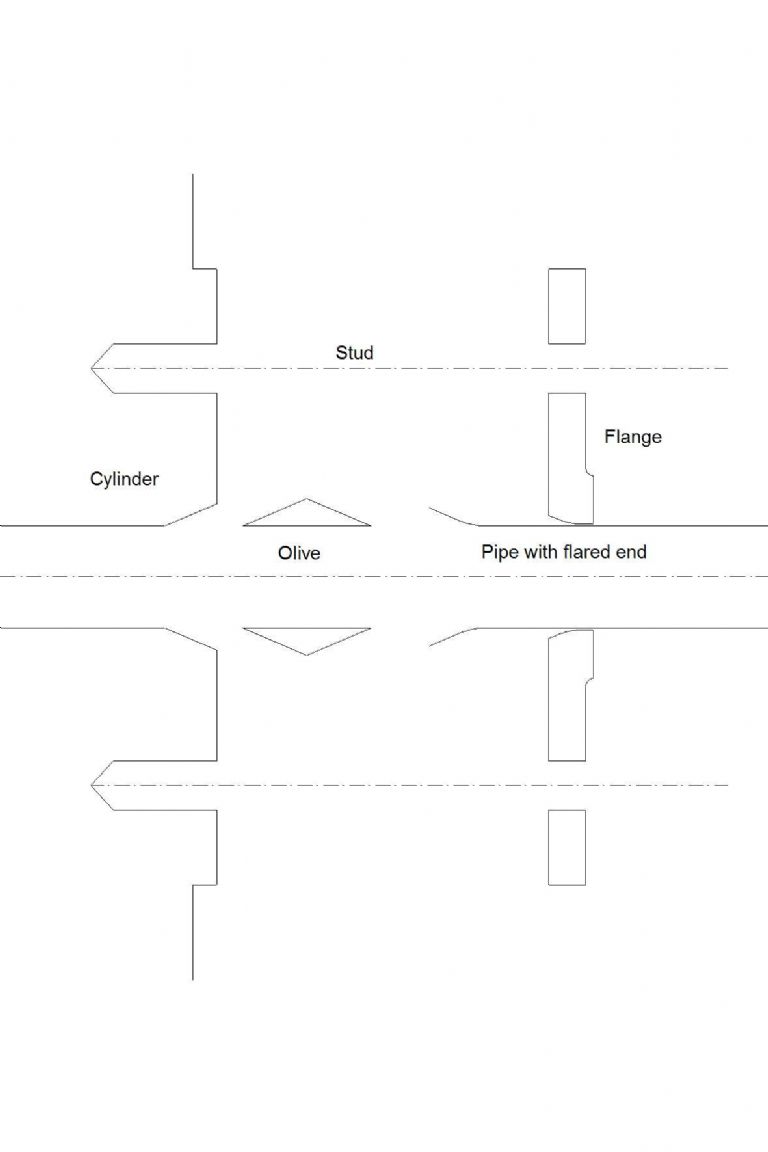You could right, Jason, that whoever installed that engine in its past screwed a union nipple into the flange, but I do not think that was the manufacturer's intention. Nor of course was a 4-bolt flange.
It was evidently designed to take a 2-stud, oval flange, and plenty of smaller engines and their fittings used those; but it's puzzling why the manufacturer machined the exhaust connection but not the more critical inlet.
Not cost-saving – as facing the inlet but not the exhaust would probably have cost the same.
So was it somehow overlooked by both the machinist and the inspector, assuming the makers had any reasonable quality control!* Probably. We would naturally assume facing the seating, and drilling and tapping the stud-holes, on one set-up on a milling-machine or a horizontal borer, but that is our mistake. The drilling and facing on this engine were separate operations, as Michael points out the exhaust face was shaped (or planed).
I do not believe that thread was original. I think it was put there by the engine's installer, either from new where the customer bought only the engine without installation service; or in some second-hand location done down to a price. There does not seem sufficient metal for it – it looks like no more than 3-4 turns, and concentrates the load on too small an area.
'
I would advise flattening that oval as well as possible, preferably by machining, and using the proper oval flange and studs, with a suitable sheet-material gasket.
The flange fitting the designer probably had in mind was an oval, malleable-iron one with a generous tapped boss that would have been screwed to an iron pipe – a catalogue item. By the early 20C pipe-fittings were readily-available, commercial items; and quite likely were in this engine's time.
You could use a copper pipe with a gunmetal / bronze flange silver-soldered on, and from my books of near the time, that would also be in keeping, though you might want to lag the pipes anyway.
++++
* Quality control.
The phrase might be a lot more recent but late-19C manufacturers were beginning to recognise its importance and to establish processes including rather approximate materials-strength tests. However, there are factors beyond technical to consider.
As when the Tay Bridge Disaster investigation and Inquiry revealed that the bridge's cast-iron columns were appallingly badly made; and that the foundry's inspectors often delegated to apprentices who would not have had the nerve to question their supposedly-skilled superiors' shoddy work.
We don't know the age and make of this steam-engine, but it's not unreasonable such delegation, perhaps under the guise of training but with poor supervision, lingered for many years longer in many, especially small, companies.
So this engine may have slipped through not properly finished, though by simple oversight or bad supervision, not poor workmanship. By the time the unfortunate installer discovered the fault, he probably had no choice but to do the best of a bad job and drive a tap though the thing. Even if he or the customer cared much about niceties in just another day's pipe-fitting, ordering a replacement would have been expensive, whoever paid, and delayed the work.
Mike Hurley.






